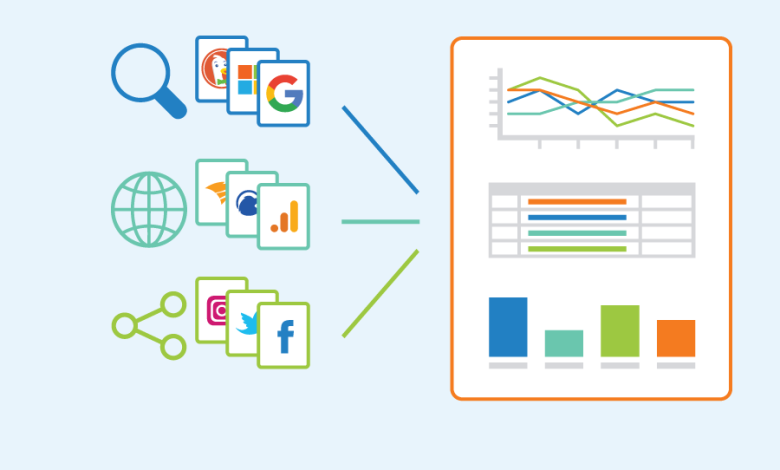What is Digital Experience Monitoring: A Comprehensive Guide

In today’s digital world, businesses constantly strive to provide customers with an exceptional online experience. However, with the increasing complexity of digital environments, ensuring that everything is functioning optimally can be challenging. This is where Digital Experience Monitoring (DEM) comes into play. This article will dive deeply into what DEM is, why it’s essential, and how it works.
What is Digital Experience Monitoring?
Digital Experience Monitoring (DEM) is the process of monitoring and measuring the performance of digital assets, including websites, mobile applications, APIs, and other digital platforms, to ensure they deliver an exceptional user experience. DEM encompasses various activities, including real-time monitoring, data analytics, and performance testing.
Why is Digital Experience Monitoring important?
Customers expect a seamless and smooth online experience in today’s digital age. They want websites and applications that are fast, reliable, and easy to use. If a website or application is slow or unresponsive, customers will quickly lose patience and move on to a competitor. This can significantly impact a business’s bottom line, leading to decreased customer satisfaction, lower conversion rates, and lost revenue.
Furthermore, with the rise of remote work, cloud computing, and the Internet of Things (IoT), businesses are dealing with increasingly complex digital environments. This complexity can make it challenging to identify and resolve performance issues. DEM helps to address this challenge by providing businesses with real-time insights into how their digital assets are performing, allowing them to identify and resolve issues before they impact customers proactively.
How does Digital Experience Monitoring work?
Digital Experience Monitoring involves several different components, including:
- Real-Time Monitoring: Real-time monitoring involves continuously monitoring the performance of digital assets, such as websites and applications, to detect issues as soon as they arise. This can involve monitoring server response times, page load times, and other metrics to identify performance bottlenecks.
- Synthetic Testing: Synthetic testing involves simulating user interactions with digital assets to identify issues before they impact actual users. This can involve creating scripts that mimic user behavior and testing websites and applications under various conditions to identify performance issues.
- Network Monitoring: Network monitoring involves monitoring the network infrastructure that supports digital assets, such as routers, switches, and servers, to identify issues that may impact performance.
- Analytics: Analytics involves collecting and analyzing data on how digital assets perform, such as page load times, bounce rates, and conversion rates, to identify trends and patterns that may indicate performance issues.
Benefits of Digital Experience Monitoring
Implementing Digital Experience Monitoring can bring numerous benefits to businesses, including:
- Improved User Experience: By monitoring the performance of digital assets, businesses can identify and resolve issues that may impact the user experience. This can lead to increased customer satisfaction and loyalty.
- Increased Revenue: By ensuring that digital assets perform optimally, businesses can increase conversion rates and generate more revenue.
- Proactive Issue Resolution: Digital Experience Monitoring allows businesses to proactively identify and resolve performance issues before they impact customers, reducing downtime and lost revenue.
- Data-Driven Insights: By collecting and analyzing data on how digital assets perform, businesses can gain insights into user behavior and preferences, allowing them to optimize their digital assets for better performance.
Challenges of Digital Experience Monitoring
While Digital Experience Monitoring can bring significant benefits to businesses, it also comes with its own set of challenges, including:
- Complexity: Digital environments can be complex, making identifying and resolving performance issues challenging.
- Cost: Implementing Digital Experience Monitoring can be expensive, particularly for larger businesses with complex digital environments.
- Integration: Integrating Digital Experience Monitoring with existing IT infrastructure can be challenging, particularly for businesses
Conclusion:
In today’s digital age, businesses must prioritize delivering an exceptional user experience to remain competitive. Digital Experience Monitoring (DEM) ensures that digital assets perform optimally and deliver an exceptional user experience. By monitoring performance in real-time, businesses can proactively identify and resolve issues before they impact customers, leading to increased customer satisfaction, loyalty, and revenue.
While implementing Digital Experience Monitoring comes with its own challenges, the benefits far outweigh the costs. By leveraging the insights provided by DEM, businesses can gain a competitive edge by optimizing their digital assets for better performance and improving the overall user experience. As digital environments evolve, businesses prioritizing Digital Experience Monitoring will be best positioned to succeed in the digital marketplace. Check out the Kentik eBook to learn more!
Apart from this, if you are interested to know more about Difference Between SEO and Digital Marketing then visit our How To category





